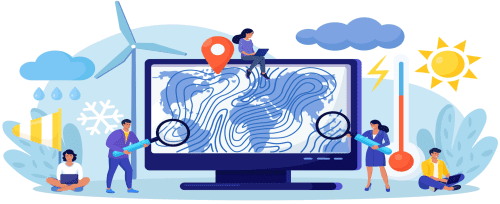Cyber Risk in Reinsurance
April 3, 2025
 Cyber Risk in Reinsurance
Cyber Risk in Reinsurance
The global business environment has turned increasingly digital in the pasts few years. It is very common for businesses across the world to conduct most of their business online. This includes transacting with customers, employees, suppliers, and even the government. It is for this reason that the role of computers has drastically increased within the…
 Pros and Cons of Catastrophe Modeling
Pros and Cons of Catastrophe Modeling
Catastrophe modeling used to be considered very complex and difficult to use. Just a few decades back, most insurance companies were either unwilling to or unable to use catastrophe models. However, over the past couple of decades, the field of catastrophe modeling has seen rapid change. The increase in computing power has led to catastrophe…
 Challenges Facing the Regulation of Reinsurance Companies
Challenges Facing the Regulation of Reinsurance Companies
The reinsurance industry is considered to be very important in most parts of the world. This is the reason that it is also one of the most heavily regulated industries across the world. However, it needs to be understood that the degree of regulation of reinsurance is not the same across the entire world. The…
Reinsurance companies have to pay out large sums of money in claims if and when a catastrophe occurs. Each time a hurricane, a flood, or any other catastrophe hits, insurance companies lose money. The monetary losses can be quite significant since catastrophe by definition refers to a natural disaster.
Hence, it is in their best interest to try to predict when catastrophes can possibly occur and what can be the financial impact of such events. Over the years, reinsurance companies have realized that statistical modeling techniques can help them predict the timing and magnitude of a catastrophe with a high degree of accuracy. This prediction is done using a process called catastrophe modeling. In this article, we will have a closer look at what catastrophe modeling is and how it impacts the reinsurance industry.
Catastrophe modeling is a computer technique that helps reinsurance companies simulate potential catastrophic events based on historical data. The technique also allows reinsurance companies to ascertain the monetary value of the loss that they are likely to face if a catastrophe were to occur. Advances in information technology allow computers to use a complex model which takes into account past data as well as current factors to come up with a fairly accurate prediction.
Reinsurance companies started using crude forms of computerized catastrophe modeling a couple of decades ago. However, in the past few years, technology and data modeling techniques have grown at a breakneck speed. This means that there have been significant advances in catastrophe modeling techniques.
The earlier catastrophe models were only based on risks arising from natural events. However, over the years, the scope has been expanded to include events such as war, terrorism, cyber-attacks, etc.
Catastrophe models have very wide applicability. The model can be used to predict different types of losses such as losses in terms of human lives or in terms of destroyed property. Catastrophe models can help predict not only the timing of a disaster but also its magnitude.

A catastrophe model is a complex computer model which is based on a very large number of calculations. These calculations are heavily influenced by input parameters entered by the insurance company. Hence, there is always a chance that biased assumptions can significantly alter the results of the module. Internally, this complex model is based on several small sub-modules. The details of these sub-modules are as follows:
Over the period of years, reinsurance companies have realized that a lot of ancillary expenses have to be paid out along with the main claim as well. As a result over the years, they have started classifying their losses into categories such as direct loss, indirect loss, and residual loss.
The fact of the matter is that catastrophe modeling is a very important concept in reinsurance. Reinsurance companies that have better catastrophe models as compared to their competitors have a competitive advantage.
Your email address will not be published. Required fields are marked *